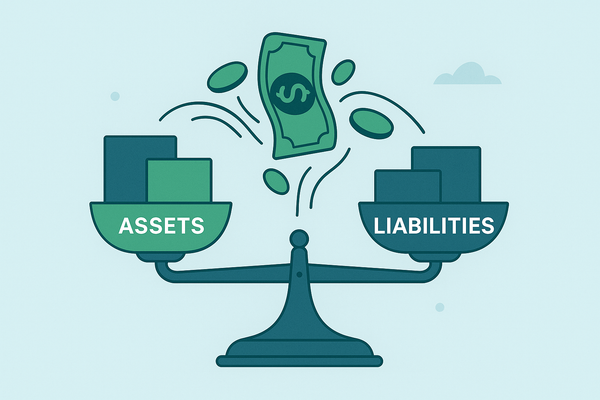Smart Accounts Payable Strategies to Boost Your Cash Flow

💬 Introduction
Most small business owners zero in on accounts receivable when thinking about improving cash flow. But here's the truth: your accounts payable process can make or break your cash position just as easily.
Are you paying bills too quickly and leaving yourself cash-strapped? Or are you paying too slowly and damaging supplier relationships?
This post will walk you through how to optimize your accounts payable (AP) strategy to better manage outflows, preserve working capital, and boost overall financial health—without putting vendor relationships at risk.
📌 What Is Accounts Payable?
Accounts payable (AP) refers to the money your business owes to suppliers and vendors for goods and services already received. These are short-term obligations, typically due within 30 to 60 days.
Common examples include:
- Rent and utilities
- Software subscriptions
- Supplier invoices for inventory
- Marketing or professional services
AP sits on the liability side of your balance sheet and directly affects your cash flow statement through operating activities.
💡 Why Managing AP Smartly Matters for Cash Flow
When done right, your AP process becomes a tool—not just a task. Here's how:
- Cash Flow Timing: Delaying payments (within reason) keeps cash in your business longer.
- Improved Liquidity: Strategically managing when and how you pay bills helps maintain a healthy buffer.
- Vendor Leverage: Optimized AP can give you better terms, early payment discounts, or preferred treatment.
- Avoid Penalties: Smart AP systems reduce the risk of late fees or missed payments.
🧠 According to a 2023 JP Morgan report, the average small business holds just 27 days of cash buffer. Stretching your payables effectively can buy precious breathing room.
⚠️ Common Accounts Payable Mistakes That Drain Cash
If your current AP system looks like a series of inboxed PDFs and sticky notes, you’re not alone. But it’s costing you. Here are some frequent missteps:
- Paying invoices before they’re due, simply to get them off your desk
- Not verifying the accuracy of invoice details
- Missing early payment discount opportunities (e.g., “2/10 Net 30” terms)
- Having no centralized system for tracking due dates
- Lack of visibility into upcoming cash needs
- Relying on manual approvals that cause delays or duplicate payments
✅ Best Practices for Smart AP Management
Ready to level up your AP process? Here’s what smart businesses do:
1. Standardize and Centralize the AP Workflow
Create a consistent process for:
- Receiving invoices
- Verifying terms and amounts
- Approving payments
- Scheduling pay dates
Use cloud-based tools like QuickBooks, Xero, or Bill.com to track and automate.
2. Take Advantage of Payment Terms
If a vendor offers Net 30, use the full 30 days unless an early payment discount makes more sense. Time your payments to align with cash inflows (e.g., after your own receivables come in).
🧮 Tip: Create a simple calendar or dashboard view of AP aging by due date.
Check out our expert's Smart Payment Terms Management post for more!
3. Negotiate Better Terms
Once you’ve built trust with a vendor:
- Ask for extended terms (e.g., Net 45 instead of Net 30)
- Request early payment discounts (e.g., 2% off if paid within 10 days)
- Explore bundled deals for bulk purchases
4. Implement a Payment Approval Threshold
Not every $100 invoice needs executive approval. Set tiered thresholds so your team can move fast while you maintain oversight where it matters.
5. Use Digital Payments and Automation
Electronic payments reduce delays and errors. Tools like Plastiq, Melio, or Ramp can help you:
- Schedule payments just before the due date
- Earn credit card rewards on AP outflows
- Streamline reconciliations with accounting software
6. Monitor AP Metrics
Track these KPIs regularly:
- Average Days Payable Outstanding (DPO)
- Early payment discount utilization
- Duplicate payment rates
- Percentage of invoices paid late
These help you spot inefficiencies and cash flow risks early.
✅ Quick AP Health Checklist
Ask yourself:
- Do I have a system for tracking all incoming invoices?
- Am I paying most bills on the due date, not before?
- Have I reviewed vendor terms to look for discount opportunities?
- Is my AP approval process clear and efficient?
- Am I using automation to reduce manual work and errors?
If you answered “no” to more than two, it’s time to refine your process.
🔚 Conclusion: Think of AP as Strategic, Not Just Tactical
Smart accounts payable management is one of the easiest ways to protect your cash—no new sales required. When you’re intentional about how and when you pay your bills, you keep your business nimble, liquid, and in control.
💡 Want to get free practical tips and advice in your mailbox? Sign-up for FREE to start mastering your business cash flow today!




